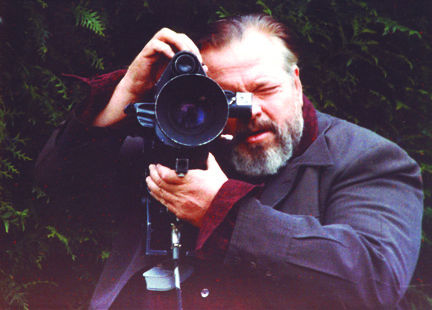Secrets and Lies
Orson Welless final film is a disjointed, fascinating look at the nature of truth

F for Fake
Directed by Orson Welles
Criterion Collection
Imagine the repertory titles of the Criterion Collection as honor roll students gathered for a class photo: the gleaming smile of the class president, the actress’s willowy intensity, the stoic set of the shot-putter’s wide jaw, and then there’s the smug leer of the acned audiovisual club president. That would be Criterion #288, Orson Welles’s F for Fake. The film’s mix of 16 and 35mm, lifelike motion and panned photography fails to meet Criterion’s usually high standards of formal beauty. However, this strange piece of narcissistic documentary revisionism will please collectors of stammering eulogies and dashing feats of cinematic bricolage.
F for Fake is a film essay about forgeries, hoaxes and the authority bestowed upon experts. At its heart is material originally directed by Françoise Reichenbach for a film on art forger Elmyr de Hory. This original project was a collaboration with de Hory’s biographer, Clifford Irving. Reichenbach halted production when Irving was caught in his own hoax: he had deceived his publishers and the world into thinking he was taking dictation for an autobiography of Howard Hughes. It was all invention. The discredited Irving’s association eroded confidence in the authenticity of the de Hory film. Reichenbach had a problem.
That original treatment—the one focused on Elmyr de Hory, with Clifford Irving as authority and Reichenbach as guide—is still partly visible here. But around the time of Irving’s credibility troubles, Reichenbach relinquished the project to Welles, who turned the lack of credibility into the film’s theme. Mirror is turned on mirror, frame encloses frame, and in a sleight of hand worthy of film essayist Chris Marker, the documentarians become players in Welles’s con.
F for Fake co-producer Françoise Widhoff once said of Welles, “He had a kind of nostalgia for reality. Glory had killed him.” F for Fake, Welles’s last completed film, is a product of the years after his own fall from grace. Yet Criterion’s 288th release redeems the man even as it explores one of his favorite obsessions: his own relation to his credulous audience, both in history and in the present. Those who know its (ostensible) auteur only as the genius behind Citizen Kane may long for that film’s unity while watching this one. F for Fake parades Welles’s fixations and self-absorption almost as much as it illustrates his points. It’s cluttered with magic tricks, jokes and Welles’s partner, Oja Kodar. Appreciating the later Orson Welles means accepting these partial products and cracked offerings of cobbled means and a distracted mind.
The moment at which glory caught up with Welles might be found around the filming of one of his first unfinished projects, It’s All True. In 1942 The Magnificent Ambersons was in post-production, and Welles was in Rio with a blank check and a blank page. Ever-changing treatments tell that It’s All True was to combine folklore, labor history, the Carnaval and a visual representation of the samba. While the director was shooting his South American omnibus, back in Hollywood, forces hostile to Welles made their infamous mutilations to Ambersons and turned the stopcock on his funding. Made 33 years later, Fake is True’s shadow, weaving its own tapestry of myth, pop history and voyeurism into a film that loops, stutters and stumbles like jazz and patters like a scatting magician.
Visit www.ruminator.com to read this article in full!